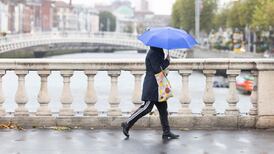Roman Catholic numbers are up despite fewer at Mass – indicating they identify with Catholicism more for cultural than religious reasons
A remarkable growth in those who define themselves as ‘no religion’
DESPITE FALLING weekly Mass attendance, more people are describing themselves as Roman Catholic.
It will strike many observers as remarkable that despite horrendous revelations in recent years the number of Irish people who still describe themselves as Roman Catholic has not only remained high, it has actually gone up by almost 5 per cent.
It may well be that much of the 179,889 increase in the Republic’s Catholic population since 2006 can be accounted for by Polish, Latvian, Lithuanian, American, Indian and Filipino immigrant Catholics, as illustrated in yesterday’s figures. There was also an estimated 2 per cent increase in native Irish Catholic numbers.
At a time when there has been such a spectacular falling-away from weekly Mass attendance, now as low as 14 per cent in Dublin, it does suggest that many Irish Catholics identify with their denomination more for cultural than religious reasons.
The figures found that “the eastern sea board counties around Dublin had a higher percentage of non-Catholics, with the percentage declining as you move west”. Three areas, Fingal and Dún Laoghaire in Dublin as well as Galway city, now have more than one in five of the population who are non-Catholic. Offaly has the lowest percentage of non-Catholics, at 8.6 per cent.
The area with the highest percentage of non-Catholics in the State is Dublin’s Dún Laoghaire/ Rathdown, where 23 per cent are not Catholic.
There has also been a remarkable growth in the number who define themselves as having “no religion” since 2006. Second to, but a long way behind Catholics, they now number 269,811 people, an increase of 44.8 per cent on their 2006 figure. They also have a particularly youthful character, with their largest number in the 25-to-29 age group, 13 per cent of whom ticked the “no religion” box.
However, and lest our atheists and agnostics run away with themselves, just 3,531 described themselves as “atheist” last year, an increase of 320.3 per cent on the 2006 figure of 929, while agnostics numbered 3,521, an increase of 132.4 per cent from 1,515 in 2006.
There was no “atheist” or “agnostic” box to tick under question 12 on the census form, which asked “What is your religion?”
It would appear likely that many atheists and agnostics preferred to tick the “no religion” box rather than fill in the blank space where you were asked on the census form to “write in your RELIGION” (emphasis on the census form).
One welcome piece of news from the results is that the decline in Ireland’s Jewish population appears to have stopped. The growth is small – up by 54 people (2.8 per cent) to 1,984, but an increase is an increase.









